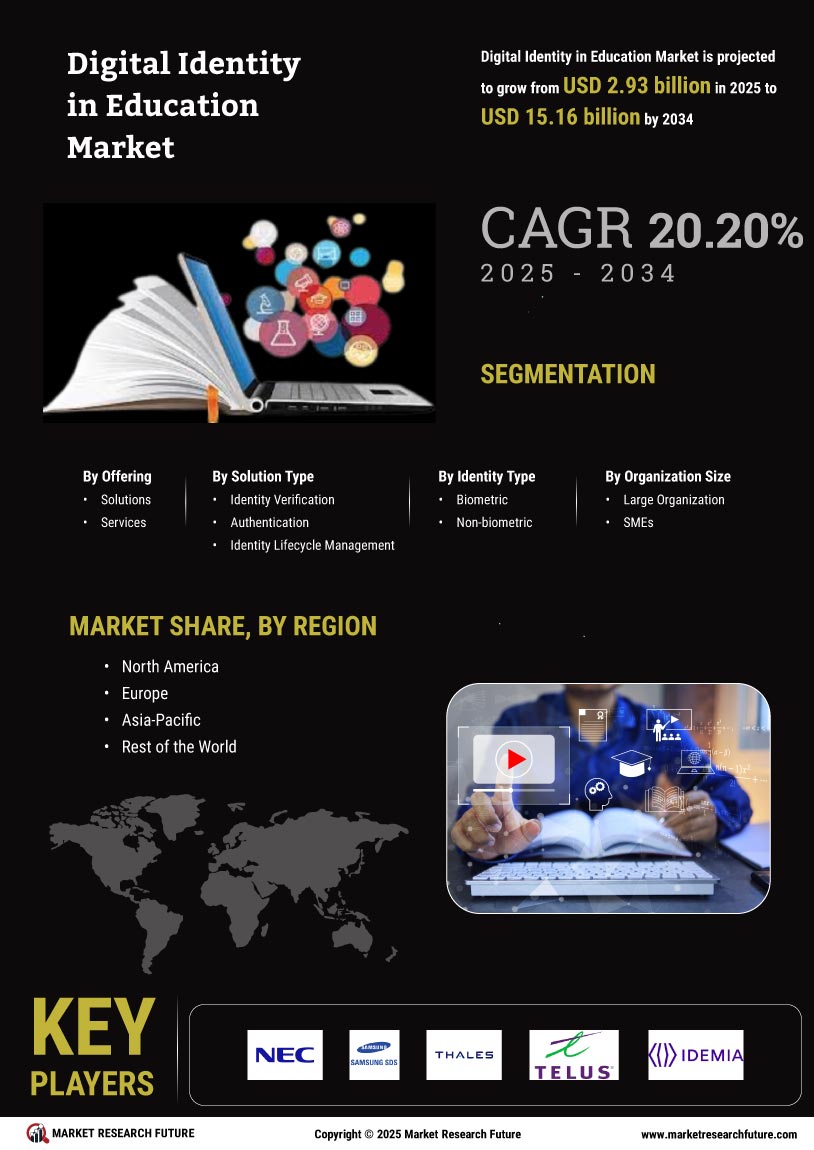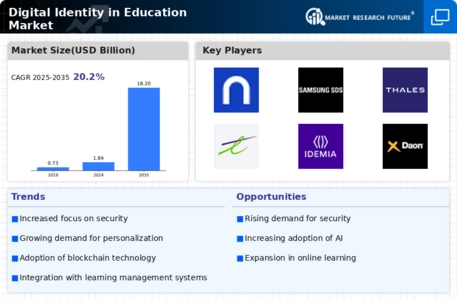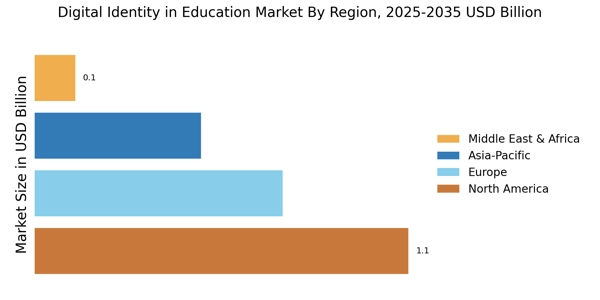Leading market players are investing heavily in research and development in order to expand their product lines, which will help the digital identity in education market, grow even more. Market participants are also undertaking a variety of strategic activities to expand their global footprint, with important market developments including new product launches, contractual agreements, mergers and acquisitions, higher investments, and collaboration with other organizations. To expand and survive in a more competitive and rising market climate, Digital Identity in EducationIndustry must offer cost-effective items.
Manufacturing locally to minimize operational costs is one of the key business tactics used by manufacturers in the global Digital Identity in Education Industry to benefit clients and increase the market Solution Type. In recent years, the Digital Identity in Education Industry has offered some of the most significant advantages to medicine.
Major players in the Digital Identity in Education Market, including NEC, Samsung SDS, Thales, Telus, IDEMIA, GBG, Tessi, Daon, ForgeRock, ImageWare, Jumio, iProov, ID R&D, Refinitiv, OneSpan, Smartmatic, Freja EID Group, Vintegris, AU10TIX, Signicat, Duo Security, Syntizen, and Hashcash Consultant Good Digital Identity, are attempting to increase market demand by investing in research and development operations.
The aerospace, defense, and security markets are served by Thales SA (Thales), which also offers smart technologies, electronic systems, software, ground transportation, services, and equipment. For the aircraft industry, it offers training solutions, flight avionics, electrical systems, electric systems, and air traffic management systems. For the ground, marine, and air defense markets, the business also offers weapon systems, protection systems, cybersecurity solutions, radio communications products, network and infrastructure systems, vital information systems, and cybersecurity solutions. Additionally, Thales provides training, maintenance, and repair services. The corporation has activities throughout the Middle East, Africa, Asia-Pacific, Europe, and the Americas.
The head office of Thales is located in Paris, Ile-de-France, France.
Wireless and wireline telecommunication services are offered by Telus Corp (Telus). The company provides a wide range of communications products and services, such as voice, data services, mobile, IP, television, video, and security; internet; entertainment; unified communications conferencing and collaboration; security consulting and managed services; cloud and managed information technology services; advisory services for home and business security and automation; and cutting-edge security and cloud-based solutions. Customers can access phone and internet services from Telus on all major wireless networks. Fast internet access, video, chat, social networking, and mobile applications are all part of its service offering.
Additionally, the business offers healthcare IT solutions. It conducts business in Central America, Asia, Europe, and North America. Vancouver, British Columbia, is the home of Telus.


















Leave a Comment